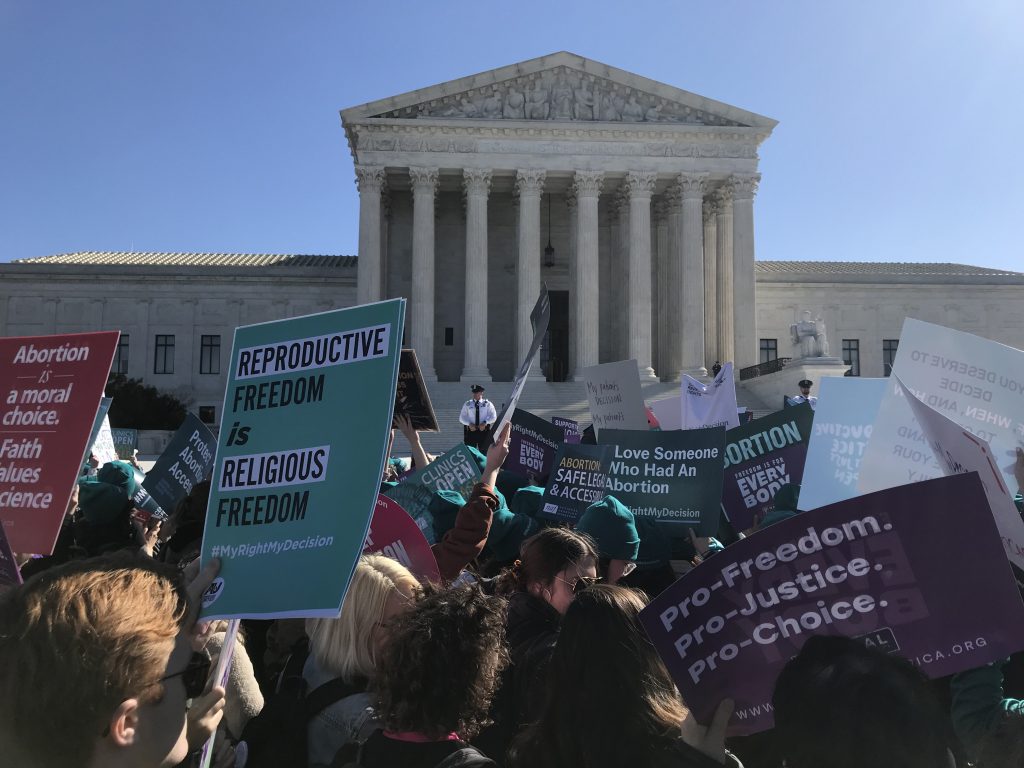It’s 2024, but it feels like we’re back in 1991 this Women’s History Month.
Back then, President George H.W. Bush was following in the footsteps of his predecessor Ronald Reagan by continuing to appoint conservative judges to the federal bench, and Roe v. Wade was expected to fall.
Radical anti-abortion activism had gained prominence and strength. Popular media was awash with stories pushing the myth that women were dissatisfied and unhappy — and feminist ideals of women’s empowerment were to blame.
Then a blockbuster book hit the streets: Backlash by Susan Faludi.
It came out just as the legal notion of “fetal personhood” was taking shape. Among other things, the book captured the horror of giving a fetus, even a hypothetical potential fetus, precedence over an actual living person. Backlash posited that any so-called women’s unhappiness was not the fault of feminism, but the fact that the struggle for equality was far from finished.
Faludi anticipated by over 20 years the deadly choices that women and their doctors are now being forced to make in a post-Roe world.
She was distressed at the prospect of backward momentum — of a world that treated women as vessels for childbearing above all. “What unites women is the blatant, ugly evidence of oppression,” she said at the time, “that will come with the inevitable demise of Roe vs. Wade.”
Faludi was right. There’s a new backlash, all right — but this time it’s not against women’s progress, but against the loss of women’s rights and their own personhood. Since Roe was overturned, at least three states have blocked new abortion bans, and 16 more have strengthened existing pro-statutes with new protections.
Safeguarding women’s autonomy was also front and center in last November’s midterm elections.
Ohio was the epicenter. Advocates put forth a bold ballot question on whether to amend the state constitution affirming the right of individuals to make their own reproductive health decisions — including abortion. The outcome? No contest. Voters opted to enshrine abortion rights by a margin of 57 to 43 percent.
Abortion was also on the ballot indirectly in Virginia. Anti-choice governor Glen Youngkin was pushing voters to flip the state Senate to Republicans while keeping the Republican majority in the House of Delegates.
That would have allowed the governor and his lackeys in the legislature to pass a 15-week abortion ban. That grand plan went down in flames — pro-choicers took full control of both houses of the General Assembly after two years of divided power.
The latest trend in the reproduction wars comes from Alabama. Another attack on women’s rights to self determination — but this time from the other end of the argument.
In a first-of-its-kind ruling, Alabama’s Supreme Court ruled that frozen embryos are children and anyone who destroys them can be held liable for wrongful death. At several facilities in the state, the decision has virtually stopped in-vitro fertilization in its tracks for women who are trying to conceive.
It’s reminiscent of struggles of the past. It took nearly a century and a half after independence for women to win the constitutional right to vote in 1919. Winning abortion rights took even longer — until 1973, when Roe guaranteed it under the 14th Amendment. But that ruling lasted only 49 years. One step forward, two steps back.
Women — both those who want abortion to be legal and those who want to become pregnant through in-vitro fertilization — are furious.
The upshot? Women are the majority of the population, the majority of registered voters, and the majority of those who actually show up at the polls. It’s a good bet they’ll remember in November.
Hell hath no fury like a woman deprived of her basic rights.

Martha Burk (@MarthaBurk) is the director of the Corporate Accountability Project for the National Council of Women’s Organizations (NCWO). This op-ed was distributed by OtherWords.org.




